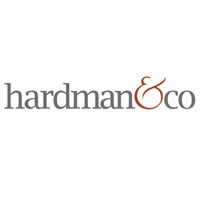 Primary Health Properties Plc (LON:PHP) reported final results 4th February and 2015’s dividend cover rose to 107% in second half. FY 2016 we estimate 105% cover. There have been 19 years’ unbroken dividend increases paid since founding. 2015 profits were significantly enhanced by operational and financing efficiencies. Cost of debt stands at 4.67%, and falling. So what comes next? Predicability in a difficult / late-cycle world. Likelihood of further progressive tightening of yields. The assets were valued on an average net initial yield basis 5.32% 2015, (tightening 10-20bps pa in recent years) a continuing trend. With upward only rents, this is a secure and growing real estate investment.
Primary Health Properties Plc (LON:PHP) reported final results 4th February and 2015’s dividend cover rose to 107% in second half. FY 2016 we estimate 105% cover. There have been 19 years’ unbroken dividend increases paid since founding. 2015 profits were significantly enhanced by operational and financing efficiencies. Cost of debt stands at 4.67%, and falling. So what comes next? Predicability in a difficult / late-cycle world. Likelihood of further progressive tightening of yields. The assets were valued on an average net initial yield basis 5.32% 2015, (tightening 10-20bps pa in recent years) a continuing trend. With upward only rents, this is a secure and growing real estate investment.
► Strategy: PHP grows its UK portfolio, now entering ROI, enhancing support for dividend growth, helping efficiency optimisation. PHP’s EPRA Cost Ratio, admin costs as a proportion of net rental income, fell to 11.6% H1 2015 and 11.5% full year (vs 12.7% H1 prior and 12.0% 2014), a strong performance for the sector.
► Stability and growth: 10.0% NAV rise 2015. PHP has trebled its portfolio size in five years. PHP’s reputation, partners and track record assist when securing both standing assets and new stock. 2016 EPS would grow even with nil acquisitions: we see an acceleration in acquisitions and forward funding, including Ireland.
► Valuation: This (healthcare) real estate sub-sector trades at a premium to NAV, as indeed it does also in the USA. PHP’s shares are valued on the basis of its assets and a robust progressive dividend, with cover rebuilt to over 100%. Our model assumes a modest 2016 rise of 1%, purely as a result of rent rises.
► Risks: There is no rental income risk or void risk, but exposure to future interest rate trends. Loan/asset value is 62.7%. Average debt maturity is steady, around six years, with a small amount of forward Swaps. As incremental management costs are below PHP’s average, faster expansion enhances dividend cover.
► Investment summary: We calculate Primary Health Properties Plc Total Shareholder Return (TSR) CAGR of over 15% over the past five years. In 2015 TSR was 23.5%. Investors in this REIT are exposed to an asset class which yields well above cost of funds, with rent being upwards only and AAA covenant. There is some exposure to future interest rate trends – closely monitored.


